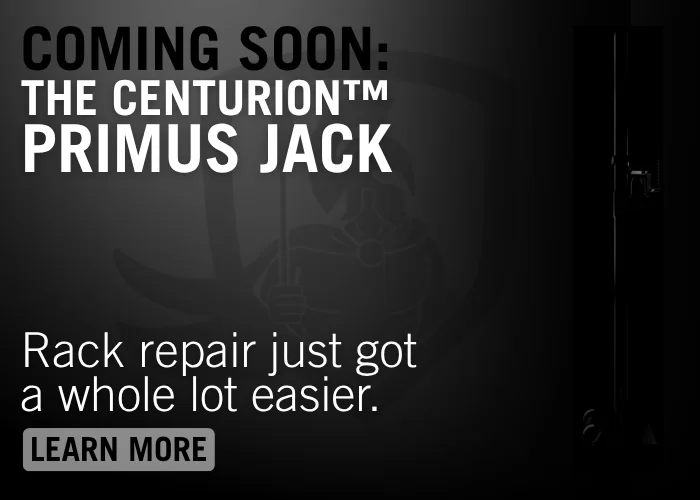Warehouse safety is paramount for businesses that handle large quantities of inventory on pallet racks. Pallet rack backing is a safety solution that is available as nylon netting or rope or metal mesh. Using mesh pallet rack backing or netting is a crucial safety measure that helps prevent employee injury, equipment damage, and product loss. In this blog, we’ll focus on the benefits of using mesh over netting and how it can improve safety in your warehouse.
What Is Pallet Rack Backing?
Without proper rack backing, items stored on pallet racks can quickly become dislodged or fall, potentially causing worker injuries, damage to the product itself or damage to the product the items fall onto. Pallet rack backing is a protective barrier that helps prevent these incidents and reduces potential liability.
Pallet rack backing is used when the product on the racks is to be contained and protected. Inventory stored on pallet racks may fall below, into an aisleway, on top of other stock, equipment, or personnel beneath it. Inventory may need to be locked behind a sliding or hinged door or gate for protection.
Pallet rack backing, both mesh panels and netting, be customized to fit different rack sizes and configurations making them versatile solutions that can be adapted to meet the unique needs of any warehouse or storage facility, however, the similarities end there. Mesh backing is a far superior product to netting for many reasons.
Advantages of Wire Mesh Panels Versus Netting
Choosing rack backing that best meets the specific needs of your warehouse. Some of the key advantages of using wire mesh panels instead of netting are:
Durability: Netting is made of rope, plastic, or nylon and is susceptible to wear, ripping, and tearing. These materials are inferior to the strength and durability of rack backing, made of metal, typically steel. The backing provides better protection for products and employees, reducing the risk of injuries and equipment damage.
Maintenance: Because it is so durable, mesh pallet rack backing requires little to no maintenance. Once installed properly, pallet rack backing works for long periods because it withstands damage and standard operational wear and tear.
Installation: Since the mesh pallet backing is metal, it is bolted to the frame of the pallet racking. This is a stronger installation than attaching nylon netting to the same frame, as the bolts themselves are made of the same durable, long-lasting material as the mesh. Mesh can be customized to fit different rack sizes and configurations, providing a better fit and higher safety.
Visibility: Both netting and mesh backing allows for visibility and does not obstruct the products’ view on the racks. This improves safety by enabling employees to monitor inventory, preventing accidents, and enhancing productivity effortlessly.
Cost: Backing mesh may be more expensive than netting initially. However, it is a better long-term investment as it is more durable and provides better protection for your products and employees. Rack netting would need to be replaced multiple times during the life span of rack backing.
Flexibility: Rack backing can include sliding or hinged doors or gates to access the materials behind the panels. These doors and gates are lockable and therefore protect valuable or controlled materials. Netting does not offer these benefits. Customizable: Wire mesh panels can be offset to different distances, allowing the contents of the rack to have more room. Wire mesh panels are sized to any shape, variety, or configuration of panel racking.
Safety Specifications
Pallet rack specifications are essential for any warehouse or distribution center that relies on pallet racking to store and organize products. Compliance with ANSI (American National Standards Institute) guidelines for safe and secure pallet racking systems is essential to ensure employee safety and protect inventory. Surprisingly, at this time, OSHA does not provide pallet rack backing specifications.
ProGMA (the Protective Guarding Manufacturers Association) has released a new American National Standard that outlines testing requirements for containment panels used in pallet rack and vertical storage systems. Our team is a founding member of ProGMA and is directly involved in creating and updating these safety standards, ensuring that we deliver our customers’ highest level of safety.
Our mesh wire panels are termed Rack Safety Panels because unlike netting, they confidently secure all objects held in the pallet racking with high-quality materials that can withstand the weight of stored items and wear and tear of daily use and increase durability of your pallet rack storage system.
In Conclusion
When choosing between mesh and netting for your warehouse, it is essential to consider your specific needs and requirements. While netting may be a cost-effective and easy-to-install option, wire mesh panels provide better protection, durability, and visibility, making it a better choice for most warehouses. Using Rack Safety Panels is a critical way to prioritize warehouse safety and ensure that your employees and products are protected from harm.
If you need assistance choosing the right solution for your warehouse or learning more about pallet rack safety, visit our website. We can provide information to make an informed decision and deliver the highest level of protection for your warehouse.
